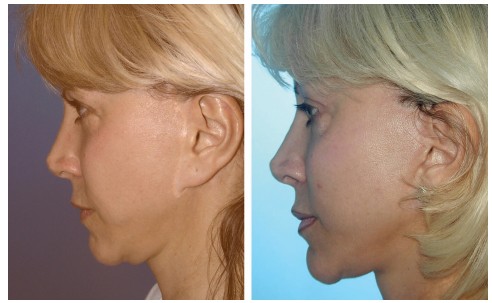Intraoperative Tissue Expansion in Rhytidectomy in Boca Raton, FL
Since its introduction over a decade ago, the validity of tissue expansion during rhytidectomy has continued to be a focus of some controversy. Despite this relatively long history, there has been no formal study of the improvement achieved with this technique. Yee et al. present an interesting attempt to objectively evaluate the cosmetic improvement obtained with the use of tissue expansion. The authors are to be commended for their effort in objectively evaluating the utility of intraoperative tissue expansion. Nevertheless, a number of points merit further discussion and clarification.An important factor affecting this study is that it was retrospective.
There is no discussion whatsoever as to how the decision was made as to which patients had intraoperative tissue expansion and which patients did not. This raises the question of selection bias; i.e., were the patients who underwent intraoperative tissue expansion the more difficult cases? In addition, the treatment group and the control group were compared only with regard to gender, age, and additional ancillary surgical procedures. Absent were important factors such as skin thickness, sun damage, deep wrinkles, and smoking history. For this study to have any validity, at a minimum the patients would have to have been randomized as to who would have intraoperative tissue expansion and who would not. An even better method would be to perform tissue expansion on one side and use the contralateral side as the control. However, this is an unacceptable option in reality because of ethical and legal considerations.
Disclaimer: Individual results may vary.

From a technical point of view, the Man face-lift expander was specifically designed to be inflated with air, whereas the authors in their study use saline. In my experience, using air as opposed to saline allows for the rapid circumferential relaxation of the elevated skin, whereas saline inflation often causes the expander to drift away from the midline of the face-lift dissection and yield expansion in the wrong direction (i.e., laterally instead of medially). After expansion, some caution must be exercised with regard to the amount of tension applied to the skin closure because of concerns regarding the blood supply to skin that has already been placed under tension. The authors mention that, in the group of patients who had undergone tissue expansion, they used minimal tension during skin closure.
In this context, the phrase minimal tension is in fact a technically variable term that can be ambiguously interpreted. With the use of intraoperative tissue expansion in rhytidectomy, an “optimal” amount of tension must be used. There is a learning curve in understanding this optimal amount of tension necessary to achieve a good, long-lasting result. The use of less than optimal tension will lead to disappointing long-term results. This is illustrated by the fact that the authors mentioned that they were somewhat surprised by the findings of their study after 6 months, in that they thought that the expanded group had a better appearance in the early postoperative period.
Intraoperative tissue expansion is not appropriate in every face lift; rather, it is another tool in our surgical repertoire that can be of great utility in some circumstances and skin types but actually counterproductive in others. Patients with excessive loose skin, heavy jowls, excessive wrinkling lateral to the corners of the mouth, and sun damage are particularly good candidates for intraoperative tissue expansion. Conversely, in patients with thin or scarred skin, this technique should be avoided.
By using this technique, I have been able to perform a number of procedures that otherwise could not have been undertaken. The advantages of intraoperative tissue expansion can be well illustrated by the case of a young female patient who had undergone two previous face lifts. These previous procedures resulted in scars that had migrated medially and were far in front of the ears, causing significant cosmetic deformity. She had been repeatedly denied additional surgery by her original surgeons.
By incorporating intraoperative tissue expansion, thus taking advantage of the viscoelastic properties of the skin, I was able to develop enough additional flap surface area to perform her surgery and return the scar to an acceptable aesthetic location within the ears, without creating a “pulled look” (Fig. 1). This result could not have been achieved without the use of intraoperative tissue expansion. The utility of this technique in specific situations can be further illustrated by reviewing the authors’ photographs.
The patient shown in the authors’ Figure 1 who did not have tissue expansion is an excellent candidate for the use of tissue expansion in that she suffers from sun damage, deep wrinkles, heavy jowls, and deep lines lateral to the corners of the mouth. Had intraoperative tissue expansion been used, greater improvement in skin draping could have been achieved and her overall result would most likely have been significantly better.
Finally, the lack of any demonstrated benefit to intraoperative tissue expansion in this study is overshadowed by the overall lackluster results. It is isappointing that among 50 patients undergoing face lift, methodology notwithstanding, the mean rating of improvement on a scale of 1 to 10 was approximately 5 (5.27 versus 5.07). Most of our patients expect, and consistently receive, results that are well above average from our professional services. Many would wonder whether having an improvement of only this magnitude would justify having cosmetic surgery at all.
Click to read & download the article: Intraoperative Tissue Expansion in Rhytidectomy
Dr. Daniel Man and his staff will be happy to discuss Intraoperative Tissue Expansion in Rhytidectomy with you. Please call for a private consultation at 561-395-5508 or schedule an appointment online.
